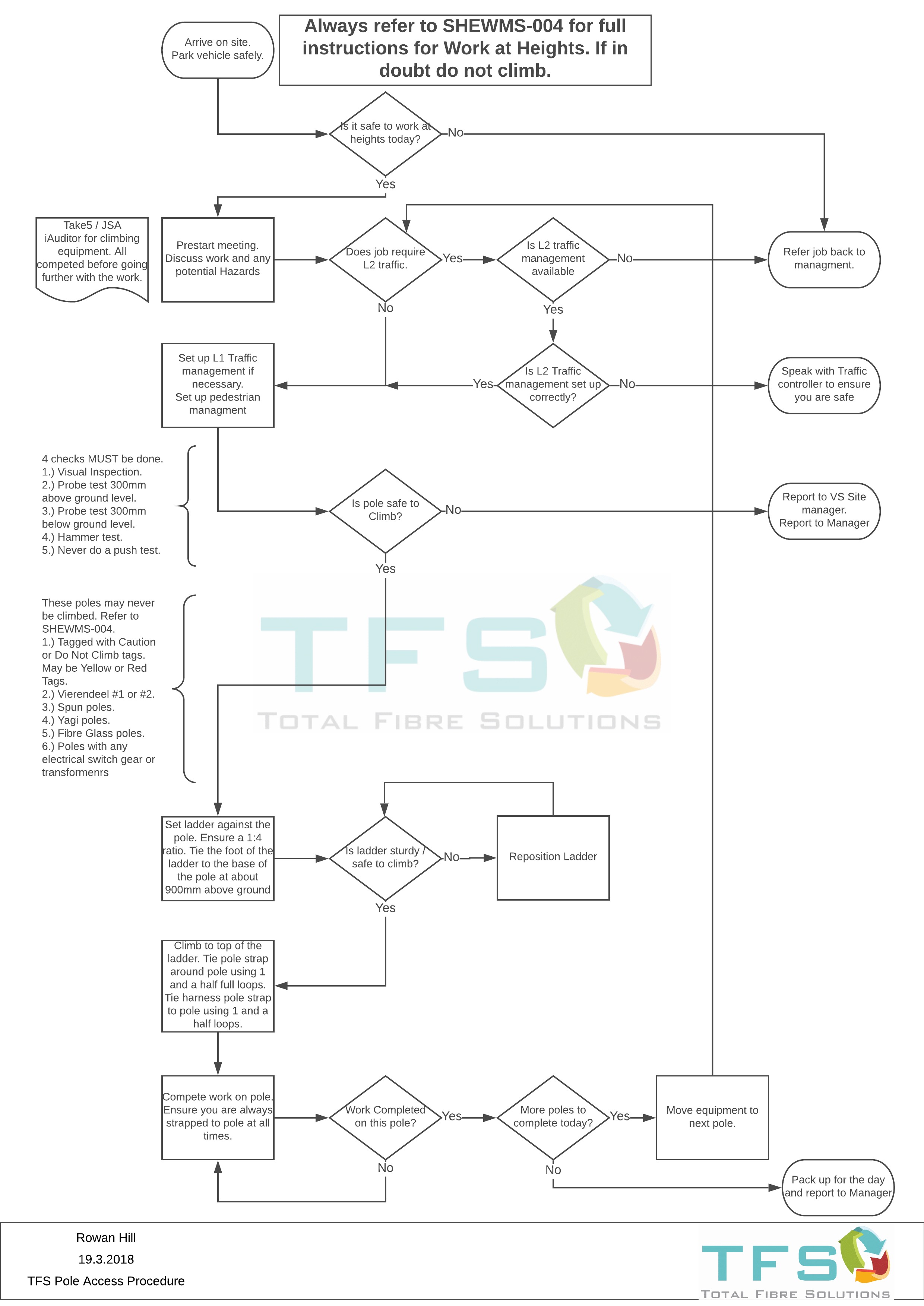Information
-
Climbing gear inspection
-
Owner of the Harness
-
Prepared by
Personal Climbing Gear
-
Harness identification number
-
Is the climbing belt older than 5 years?
-
Is the harness in a good, visual condition?
-
Are any of the areas on the belt melted (glazed) or damaged by heat?
-
Does any area of the harness have chemical damage?
-
Is any of the stitching damaged?
-
Does the harness have any cuts or abrasions?
-
Does any of the metallic components have corrosion or structural damage?
-
Are any parts of the harness damaged by twisting or malformation?
-
Does the harness have any Ultra-Violet damage?
-
Is all written information on the harness visible?
Suitability of poles to be climbed.
-
Please ensure you read and understand this flow chart. You are legally obliged to adhere to our climbing procedures.
-
I take responsibility for testing all poles, before climbing, to determine suitability for climbing.
-
I acknowledge that the poles, to be climbed today, are not 'unsafe', marked or otherwise.
Suitability of Ladders used for climbing.
-
Ladder identification number
-
Note last 'annual test date' of ladder
-
Is the ladder clear from any chemicals or residue?
-
Is there any visual cracks or damage to the ladder?
-
Are ropes, connected to the ladder, in good condition?
-
Does the ladder have a rope for tying off the lower section to the pole?
-
Is the 'pole attachment' in good working order?















